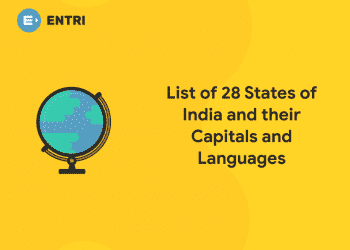Table of Contents
The United Nations has proclaimed May 22 The International Day for Biological Diversity (IDB) to increase understanding and awareness of biodiversity issues. When first created by the Second Committee of the UN General Assembly in late 1993, 29 December (the date of entry into force of the Convention of Biological Diversity), was designated The International Day for Biological Diversity. In December 2000, the UN General Assembly adopted 22 May as IDB, to commemorate the adoption of the text of the Convention on 22 May 1992 by the Nairobi Final Act of the Conference for the Adoption of the Agreed Text of the Convention on Biological Diversity. This was partly done because it was difficult for many countries to plan and carry out suitable celebrations for the date of 29 December, given the number of holidays that coincide around that time of year.
Grab Latest GK Study Materials! Register Here!
International Day for Biological Diversity 2023: Sunday, 22 May
In this article readers can get a glimpse on
- What is biological diversity
- International Day for biological diversity theme
- International Day for biological diversity facts
- International Day for biological diversity quotes
- International Day for biological diversity quiz
What is biological diversity?
The biological diversity is often known as a wide range of plants, livestock, and microorganisms, it also includes genetic differences within each species for example between crop and livestock varieties and the different ecosystems like lakes, forests, deserts, agricultural landscapes.
Resources for biological diversity are the pillars on which we build civilizations. Fish supply nearly 3 billion people with 20% of animal protein. Plants provide more than 80% of the human diet. In developing countries, up to 80 percent of people live in rural areas rely on traditional plant-based basic health care medicines.
Grab Latest GK Study Materials! Register Here!
International Day for Biological Diversity Theme 2023
Building a shared future for all life
One thing is certain: despite all of our technological breakthroughs, humans are utterly reliant on healthy and vibrant ecosystems for our water, food, medicines, clothing, fuel, shelter, and energy, to mention a few.
“Building a shared future for all life” is the theme for 2022. The tagline expresses the notion that biodiversity is the foundation upon which we may rebuild better in the context of the ongoing United Nations Decade on Restoration, which stresses that biodiversity is the answer to various sustainable development concerns.
Biodiversity is the basis upon which we might rebuild better, from ecosystem-based approaches to climate and/or nature-based solutions to climate, health challenges, food and water security, and sustainable livelihoods. The Convention on Biological Diversity (CBD), a vital international tool for sustainable development, sends this message.
The following are the themes of International Day for Biological Diversity that evolved from 2002 to 2022
- 2022 – Building a shared future for all life
- 2021 – We’re part of the solution #ForNature.
- 2020 – Our solutions are in nature
- 2019 – Our Biodiversity, Our Food, Our Health
- 2018 – Celebrating 25 Years of Action for Biodiversity
- 2017 – Biodiversity and Sustainable Tourism
- 2016 – Mainstreaming Biodiversity; Sustaining People and their Livelihoods
- 2015 – Biodiversity for Sustainable Development
- 2014 – Island Biodiversity
- 2013 – Water and Biodiversity
- 2012 – Marine Biodiversity
- 2011 – Forest Biodiversity
- 2010 – Biodiversity, Development and Poverty Alleviation
- 2009 – Invasive Alien Species
- 2008 – Biodiversity and Agriculture
- 2007 – Biodiversity and Climate Change
- 2006 – Protect Biodiversity in Drylands
- 2005 – Biodiversity: Life Insurance for our Changing World
- 2004 – Biodiversity: Food, Water and Health for All
- 2003 – Biodiversity and poverty alleviation – challenges for sustainable development
- 2002 – Dedicated to forest biodiversity
Grab Latest GK Study Materials! Register Here!
International Day for Biological Diversity 2021 Theme
The Secretariat of the Convention on Biological Diversity announced the Biodiversity Day 2021 slogan as“We’re part of the solution”. This slogan was chosen as continuation of the momentum generated in the year 2020 with the theme “Our solutions are in nature”. The theme focuses to find nature based solutions to climate, health issues, food and water security, and sustainable livelihoods and biodiversity. Biodiversity Day 2021 will be observed through an online platform.
When biodiversity has a problem, humanity has a problem
Biological diversity is commonly thought of in terms of the wide range of plants, animals, and microorganisms, but it also includes genetic differences within each species — for example, between crop varieties and livestock breeds — and the diversity of ecosystems (lakes, forests, deserts, and agricultural landscapes) that host a variety of interactions among their members (humans, plants, animals).
The cornerstones on which we build civilizations are biological diversity resources. About 3 billion individuals get 20% of their animal protein from fish. Plants account for more than 80% of the human diet. Traditional plant-based remedies are used by up to 80% of people living in rural areas in underdeveloped countries for basic healthcare.
However, the loss of biodiversity poses a threat to everyone, including our health. Biodiversity loss has been shown to increase zoonoses (diseases transmitted from animals to people), but biodiversity preservation provides good tools for fighting pandemics such as those caused by coronaviruses.
While there is a growing realization that biological diversity is a worldwide asset of enormous importance to future generations, certain human actions are reducing the number of species. The United Nations agreed to commemorate the International Day for Biological Diversity every year because of the importance of public education and awareness about this issue.
Grab Latest GK Study Materials! Register Here!
Facts about Biological Diversity Day 2023
- Recent negative trends on biodiversity and ecosystems will weaken enhancements in the 8 Sustainable Development Goals towards 80% of the targets assessed.
- There is now a threat of extinction for 1 million animals and plant species.
- Biodiversity remains the basis of a sustainable future for health and healthy livelihoods.
- Human activities have substantially altered three-quarters of the land-based ecosystem and about 66% of the aquatic environment.
Quotes on International Day for Biological Diversity
- “If we pollute the air, water and soil that keep us alive and well, and destroy the biodiversity that allows natural systems to function, no amount of money will save us” – David Suzuki
- “Either we leave our descendants an endowment of zero poverty, zero fossil-fuel use, and zero biodiversity loss, or we leave them facing a tax bill from Earth that could wipe them out” – Johan Rockstrom
- “This is the assembly of life that took a billion years to evolve. It has eaten the storms-folded them into its genes-and created the world that created us. It holds the world steady.” –
- “Biodiversity can’t be maintained by protecting a few species in a zoo, or by preserving greenbelts or national parks. To function properly, nature needs more room than that. It can maintain itself, however, without human expense, without zookeepers, park rangers, foresters or gene banks. All it needs is to be left alone.” – Donella Meadows
Grab Latest GK Study Materials! Register Here!
International Day for Biological Diversity Quiz
1. The variety of species on the planet Earth and the ecological processes that they are part of refers to
a. genetics
b. variability
c. biological diversity
d. ecosystem speciation
2. Species is a particular group of organisms that has the same structure and can
a. have the same predators.
b. consume the same food supply.
c. live in the same area.
d. reproduce with each other.
3. Which of the below mentioned reasons are not the fact why biodiversity important?
4. Which land-based ecosystem has the most biodiversity?
5. Which among the following does not contribute to the loss of biodiversity?
Reasons to subscribe Entri for the preparation of Competitive Examinations
- Entri Provides you an excellent online platform to prepare for the exam
- The Entri app can be download free of cost.
- users can download the app and join the appropriate class as per choice
- Entri provides video classes as well on various important and difficult topics by the excellent faculties in different languages.
- Entri provides revision modules written by excellent faculties. It also provides monthly tests based on the classes
- Entri provides an excellent platform with full- length mock tests. It also provides a platform to solve previous year question papers
- It also gives you access to clarify your doubts whenever required.
Important national and international days and its significance by Entri.
- National anti terrorism day 2023: History,celebration, quotes, quiz
- National Technology day 2023: history, celebrations, quiz
- International mother’s Day 2023: History and celebrations
- World Thalassaemia Day 2023: Significance and theme
- National Productivity Day 2023- History, significance and theme
- World athletics Day 2023– History, theme and quiz
- Rabindranath Tagore Jayanti 2023: Significance, timeline and achievements













